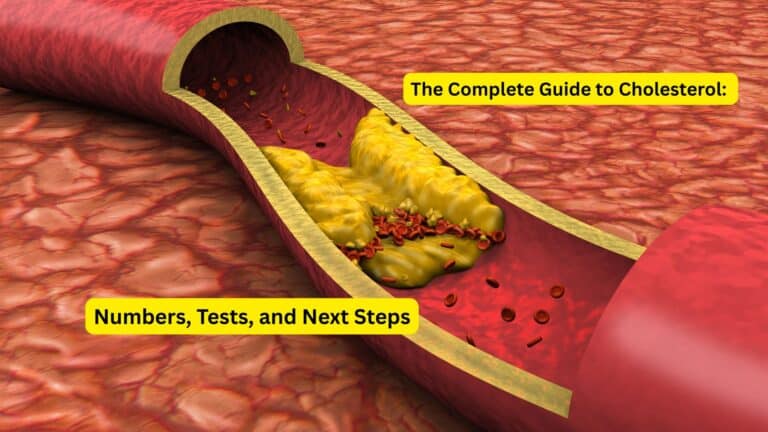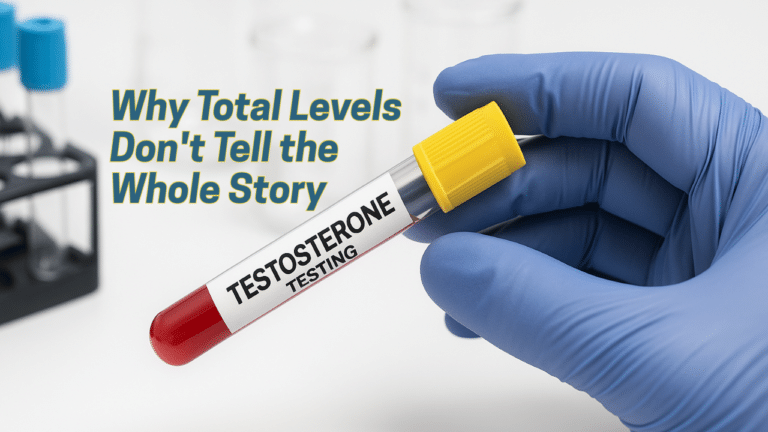Introduction
The liver stands as one of the body’s most essential organs, performing over 500 vital functions including detoxification, metabolism, bile production, and protein synthesis. This remarkable organ processes everything from the food we eat to the medications we take, serving as the body’s primary chemical processing center. Understanding how liver health evolves throughout life enables individuals to make informed decisions about prevention, monitoring, and treatment at each stage.
Liver health changes significantly from young adulthood through senior years, with each life stage presenting unique risks, challenges, and opportunities for maintaining optimal function. While young adults typically enjoy robust liver resilience, middle-aged individuals often face metabolic complications, and seniors must navigate cumulative damage and declining regenerative capacity. Recognizing these age-specific patterns empowers people to adopt targeted strategies for preserving liver health throughout their entire lifespan.
Young Adult Liver Health
Young adulthood represents a period of peak liver function and remarkable regenerative capacity, yet this stage also establishes patterns that will impact liver health for decades to come. The liver’s natural resilience during these years can mask the early effects of harmful behaviors, making awareness and prevention particularly crucial. Understanding the unique risks and protective factors relevant to this age group helps establish a foundation for lifelong liver wellness.
Key Functions and Resilience
The young adult liver operates at optimal efficiency, demonstrating remarkable capacity for regeneration and recovery from minor damage. This robust functionality allows the organ to process toxins effectively, maintain stable blood sugar levels, and produce essential proteins without significant strain. The liver’s regenerative ability peaks during this period, enabling recovery from acute injuries or temporary stress that might cause lasting damage in older adults.
However, this natural resilience can create a false sense of security, leading young adults to underestimate the cumulative effects of lifestyle choices. The liver’s ability to compensate for damage means that harmful behaviors may not produce immediate symptoms, allowing problems to develop silently over time. This characteristic makes preventive measures and healthy habits particularly important during young adulthood.
Common Risks
Young adults face specific liver health risks that differ from those encountered later in life. Viral hepatitis infections, particularly hepatitis B and C, pose significant threats through sexual transmission and other high-risk behaviors. These infections can establish chronic conditions that progress silently for years before causing noticeable symptoms.
Alcohol misuse represents another major concern during young adulthood, with binge drinking and regular excessive consumption capable of causing immediate liver inflammation and setting the stage for long-term damage. Early signs of fatty liver disease can appear even in young adults, particularly those with poor dietary habits, sedentary lifestyles, or rapid weight gain. The increasing prevalence of obesity among young adults has made non-alcoholic fatty liver disease a growing concern in this age group.
Prevention Strategies
Effective liver protection during young adulthood focuses on establishing healthy habits and avoiding high-risk behaviors. Hepatitis B vaccination provides crucial protection against one of the most common causes of chronic liver disease worldwide. Safe practices regarding sexual activity, tattoos, and body piercings help prevent hepatitis transmission, while avoiding sharing personal items like razors or toothbrushes reduces infection risks.
Moderate alcohol consumption or abstinence protects against both acute liver injury and chronic disease development. Regular physical exercise supports healthy metabolism and helps prevent fat accumulation in the liver, while maintaining a balanced diet rich in fruits, vegetables, and whole grains provides essential nutrients for optimal liver function. Young adults should also be cautious about over-the-counter medications and supplements, as even common pain relievers can cause liver damage when used excessively.
Liver Health in Middle Age
Middle age brings significant metabolic changes that can profoundly impact liver health, with this life stage representing a critical period for preventing or managing chronic liver conditions. The body’s changing metabolism, combined with years of accumulated lifestyle effects, creates unique challenges that require targeted attention and proactive management. Understanding these risks and implementing appropriate strategies can prevent progression to more serious liver disease.
Rising Metabolic Risks
Non-alcoholic fatty liver disease affects up to 25% of adults worldwide and becomes increasingly prevalent during middle age, often developing alongside obesity, type 2 diabetes, and metabolic syndrome. These interconnected conditions create a cascade of metabolic dysfunction that can overwhelm the liver’s normal processing capacity. Insulin resistance, commonly developing during middle age, promotes fat accumulation in liver cells while impairing the organ’s ability to process glucose effectively.
The combination of hormonal changes, decreased metabolism, and lifestyle factors often leads to weight gain during middle age, directly contributing to liver fat accumulation. Visceral obesity, characterized by fat accumulation around internal organs, particularly stresses liver function and increases inflammation throughout the body. High blood pressure and elevated cholesterol levels, common during this life stage, further compound liver health risks.
Disease Progression
The progression from simple fatty liver to more serious conditions follows a predictable pattern that can span years or decades. Fat accumulation leads to inflammation, which can progress to fibrosis if left unmanaged, with approximately 20% of individuals with fatty liver eventually developing end-stage cirrhosis without intervention.
This progression often occurs silently, with patients experiencing few or no symptoms until significant liver damage has occurred. The inflammatory stage, known as non-alcoholic steatohepatitis (NASH), represents a critical turning point where intervention can still prevent irreversible scarring. Once fibrosis develops, the liver’s architecture begins to change permanently, though early fibrosis may still respond to aggressive lifestyle modifications.
Testing and Monitoring
Regular liver function testing becomes essential during middle age, particularly for individuals with metabolic risk factors. Blood tests measuring liver enzymes, proteins, and other markers can detect early signs of liver dysfunction before symptoms appear. Advanced imaging studies may be recommended to assess fat accumulation and fibrosis development, providing valuable information for guiding treatment decisions.
Lifestyle modifications remain the cornerstone of liver health preservation during middle age, with Mediterranean diet patterns showing particular benefit for reducing liver fat and inflammation. Weight management through caloric reduction and increased physical activity can reverse early-stage fatty liver disease and prevent progression to more serious conditions. Regular monitoring allows healthcare providers to track progress and adjust recommendations based on individual response to interventions.
Senior Liver Health
The senior years present unique challenges for liver health as the organ’s regenerative capacity declines and cumulative damage from decades of exposure becomes apparent. Age-related changes in liver structure and function, combined with increased medication use and comorbid conditions, create a complex landscape requiring specialized attention and careful management. Understanding these changes helps seniors and their healthcare providers develop appropriate strategies for maintaining liver function and managing existing conditions.
Decline in Regenerative Capacity
The liver’s ability to regenerate and recover from damage decreases significantly with advancing age, making seniors more vulnerable to acute injuries and less able to recover from chronic damage. The number of functional liver cells decreases over time, while remaining cells may function less efficiently due to accumulated wear and cellular aging processes. Blood flow through the liver typically decreases with age, further compromising the organ’s ability to process toxins and perform metabolic functions.
This reduced regenerative capacity means that liver injuries that might heal completely in younger individuals can result in permanent scarring in seniors. Medication metabolism becomes less predictable, requiring careful dose adjustments and monitoring to prevent drug-induced liver injury. The liver’s decreased ability to synthesize proteins can affect immune function, blood clotting, and fluid balance, contributing to various health complications commonly seen in older adults.
Common Conditions
Seniors face increased risks for several serious liver conditions, with cirrhosis, portal hypertension, and hepatocellular carcinoma representing the most significant threats. Cirrhosis, characterized by extensive scarring that disrupts normal liver architecture, can result from decades of chronic liver disease progression. This condition leads to complications including fluid accumulation, bleeding from enlarged veins, and cognitive changes due to toxin buildup.
Portal hypertension develops as scarring restricts blood flow through the liver, causing blood to back up and find alternative pathways through smaller vessels. These enlarged vessels, particularly in the esophagus and stomach, can rupture and cause life-threatening bleeding. Hepatocellular carcinoma, the most common form of liver cancer, typically develops in the context of chronic liver disease and cirrhosis, with risk increasing substantially after age 60.
Management
Effective liver health management in seniors requires frequent monitoring, careful medication management, and attention to comorbid conditions that can impact liver function. Regular screening for liver complications helps detect problems early when interventions may still be beneficial. Medication lists require regular review to minimize hepatotoxic exposures and ensure appropriate dosing for decreased liver function.
Managing comorbid conditions such as diabetes, heart disease, and kidney disease becomes particularly important as these conditions can both affect and be affected by liver function. Nutritional support may be necessary to address deficiencies common in patients with advanced liver disease, while careful attention to fluid balance helps prevent complications like ascites and edema.
Lifestyle and Preventive Strategies Across All Ages
Maintaining optimal liver health throughout life requires consistent attention to lifestyle factors that can either support or undermine liver function. While specific risks and challenges vary by age, certain fundamental principles apply across all life stages, providing a foundation for liver wellness that adapts to changing needs over time. These evidence-based strategies form the cornerstone of liver disease prevention and can significantly impact long-term outcomes.
Avoiding alcohol misuse represents one of the most important steps individuals can take to protect their liver health at any age. While moderate alcohol consumption may be acceptable for some adults, any level of alcohol use can be harmful to individuals with existing liver disease or those taking medications that interact with alcohol. Understanding personal risk factors and making informed decisions about alcohol consumption helps prevent both acute liver injury and chronic disease development.
Maintaining a healthy weight through balanced nutrition and regular physical activity provides comprehensive liver protection. The Mediterranean diet pattern has shown particular benefit for reducing liver inflammation and fat accumulation, emphasizing fruits, vegetables, whole grains, lean proteins, and healthy fats while limiting processed foods and added sugars. Regular exercise not only supports weight management but also improves insulin sensitivity and reduces liver fat independent of weight loss.
Hepatitis B vaccination and awareness of hepatitis C transmission risks provide crucial protection against viral liver infections. Safe practices regarding medical procedures, personal hygiene items, and high-risk behaviors help prevent infection throughout life. For individuals already infected with hepatitis viruses, regular monitoring and treatment can prevent disease progression and reduce transmission risks.
Walk-In Lab testing services offer convenient access to essential liver health monitoring tools, including comprehensive liver enzyme panels, fibrosis markers, and viral hepatitis screening. Regular testing enables early detection of liver problems before symptoms develop, allowing for timely interventions that can prevent disease progression. These accessible testing options support proactive liver health management across all life stages.
Frequently Asked Questions
How does liver function change with age?
Liver function typically declines gradually with age due to cumulative damage from various factors and reduced regenerative capacity. The liver becomes less efficient at processing toxins and medications, synthesizing proteins, and recovering from injury. While healthy aging may involve only modest changes, the presence of chronic diseases, medications, or lifestyle factors can accelerate functional decline and increase the risk of complications.
When should I get my liver tested?
Liver testing is recommended for individuals with risk factors such as obesity, diabetes, alcohol use, or family history of liver disease, even without symptoms. Regular screening becomes particularly important after age 40 or if experiencing symptoms like persistent fatigue, abdominal swelling, jaundice, or unexplained weight changes. Those taking medications known to affect the liver should have periodic monitoring as recommended by their healthcare providers.
Can liver damage be reversed?
Early stages of liver disease, including fatty liver and mild inflammation, can often be reversed through lifestyle modifications and treatment of underlying conditions. However, advanced scarring (cirrhosis) is typically irreversible, though progression can be slowed or stopped with appropriate management. The key is early detection and intervention before permanent structural changes occur, emphasizing the importance of regular screening and risk factor modification.
Is liver disease always symptomatic?
No, early stages of liver disease are often completely asymptomatic, with many patients having no awareness of developing problems until significant damage has occurred. This silent nature of liver disease makes regular screening particularly important for at-risk individuals. Symptoms typically appear only when liver function becomes significantly impaired, at which point treatment options may be more limited and outcomes less favorable.
Conclusion
Understanding how liver health evolves across life stages empowers individuals to make informed decisions about prevention, screening, and treatment throughout their lives. From the resilient but vulnerable years of young adulthood through the metabolic challenges of middle age to the cumulative risks of senior years, each life stage presents unique opportunities for maintaining optimal liver function.
The liver’s remarkable capacity for regeneration and recovery, particularly evident in younger years, should not be taken for granted but rather viewed as an opportunity to establish healthy patterns that will benefit lifelong wellness. As metabolic risks increase during






